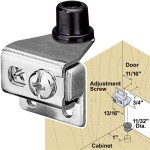Samsung TV Screen Mirroring with iPhone Not Working: Troubleshooting and Solutions
Screen mirroring, the ability to wirelessly project the display of a mobile device onto a larger screen, has become an increasingly popular feature for both personal and professional use. Samsung TVs, renowned for their display quality and smart capabilities, offer screen mirroring functionality that is compatible with iPhones. However, users frequently encounter instances where the connection between the iPhone and the Samsung TV fails, preventing the desired screen mirroring experience. This article provides a comprehensive guide to diagnosing and resolving issues that may prevent an iPhone from successfully mirroring its screen onto a Samsung TV.
Successful screen mirroring requires both the iPhone and the Samsung TV to meet certain prerequisites. The iPhone must be running a compatible version of iOS, typically iOS 12 or later is recommended for optimal performance. The Samsung TV must also support screen mirroring, which is generally available on most smart TV models manufactured after 2015. Both devices must be connected to the same Wi-Fi network, and any firewalls or security settings on the network should not be configured to block communication between the devices. Furthermore, ensuring that both devices are updated with the latest software versions is crucial for maintaining compatibility and resolving potential bugs that could interfere with screen mirroring.
Verifying Network Connectivity and Compatibility
The foundation of successful screen mirroring lies in a stable and compatible network connection. Begin by confirming that both the iPhone and the Samsung TV are connected to the same Wi-Fi network. A common mistake is inadvertently connecting the devices to different networks, such as a guest network on the TV or the cellular network on the iPhone. To verify the connection, access the Wi-Fi settings on both devices and ensure they are displaying the same network name. Also, check the signal strength of the Wi-Fi network on both devices. A weak signal can lead to intermittent connectivity issues and prevent screen mirroring from establishing a stable connection.
It is also important to ascertain whether the Samsung TV supports screen mirroring with iPhones. While most modern Samsung smart TVs are equipped with this functionality, some older models may lack the necessary protocols. Consult the TV's user manual or the manufacturer's website to confirm compatibility. If the TV does support screen mirroring, ensure that the feature is enabled in the TV's settings. This setting is often labelled as "Screen Mirroring," "Mirroring," or "Smart View," depending on the TV model. Navigate to the relevant settings menu and verify that the feature is turned on. If the TV has multiple input sources, make sure the correct input source for screen mirroring is selected.
In some cases, the network itself may be the source of the problem. Firewalls or security settings on the router could be blocking communication between the iPhone and the Samsung TV. Temporarily disabling the firewall or adjusting the security settings to allow connections between devices on the local network can help determine if this is the case. However, disabling the firewall should only be done for troubleshooting purposes and it is crucial to re-enable it once the issue has been resolved to maintain network security. Additionally, some routers may have features like AP isolation enabled, which prevents devices connected to the same network from communicating with each other. Disabling AP isolation in the router's settings can resolve this issue.
Troubleshooting iPhone Settings and AirPlay
The iPhone settings play a crucial role in enabling screen mirroring, particularly with the use of AirPlay. AirPlay is Apple's proprietary wireless streaming protocol that allows iPhones and other Apple devices to transmit audio and video content to compatible devices, including Samsung TVs. To ensure that AirPlay is functioning correctly, make sure it is enabled on both the iPhone and the Samsung TV. On the iPhone, AirPlay settings can be accessed through the Control Center. Swipe down from the top-right corner of the screen (or up from the bottom on older iPhones) to open the Control Center, and then tap the "Screen Mirroring" icon. This will display a list of available devices, including the Samsung TV.
If the Samsung TV is not appearing in the list of available devices, there may be a problem with the AirPlay settings on the TV. Access the TV's settings menu and navigate to the AirPlay settings. Ensure that AirPlay is turned on and that the TV is discoverable by other devices. Some Samsung TVs may require a passcode to be entered on the iPhone before screen mirroring can be established. If this is the case, the TV will display a passcode on the screen, which must be entered on the iPhone. If the passcode is entered incorrectly, the connection will fail. Verify that the correct passcode is being entered.
Another potential issue is interference from other wireless devices. Bluetooth devices, microwave ovens, and other electronic devices can interfere with Wi-Fi signals and disrupt the screen mirroring connection. Try moving the iPhone and the Samsung TV closer to the router to improve the signal strength and reduce the likelihood of interference. Also, turn off any unnecessary Bluetooth devices that may be interfering with the Wi-Fi signal. Restarting both the iPhone and the Samsung TV can also help resolve temporary glitches that may be preventing screen mirroring from working correctly. Power off both devices completely, wait for a few seconds, and then turn them back on.
Addressing Samsung TV Specific Issues and Firmware Updates
Samsung TVs, like all complex electronic devices, can experience software glitches and firmware issues that can interfere with screen mirroring functionality. Before delving into more complex troubleshooting steps, it is advisable to perform a power cycle on the TV. Unplug the TV from the power outlet, wait for at least 30 seconds, and then plug it back in. This simple procedure can often resolve temporary software glitches that may be preventing screen mirroring from working correctly. Ensure that the TV is connected to a stable power source during the power cycle.
Outdated firmware can also be a source of screen mirroring problems. Firmware is the software that controls the TV's hardware and features, and outdated firmware can contain bugs or compatibility issues that can prevent screen mirroring from working properly. To update the TV's firmware, access the TV's settings menu and navigate to the "Software Update" or "Support" section. Check for available updates and install any updates that are found. The TV will typically download and install the update automatically, and it may restart during the process. Ensure that the TV is connected to the internet during the update process.
In some cases, specific Samsung TV settings may be interfering with screen mirroring. One such setting is the "Anynet+ (HDMI-CEC)" feature. Anynet+ allows devices connected to the TV via HDMI to communicate with each other. While this feature can be useful in some situations, it can also sometimes interfere with screen mirroring. Try disabling Anynet+ in the TV's settings menu to see if it resolves the issue. Another setting that can potentially interfere with screen mirroring is the "Eco Sensor" or "Ambient Light Sensor." This sensor automatically adjusts the TV's brightness based on the ambient lighting conditions. Try disabling this sensor to see if it resolves the problem.
If all other troubleshooting steps have failed, consider performing a factory reset on the Samsung TV. A factory reset will restore the TV to its original factory settings, which can resolve persistent software issues that may be preventing screen mirroring from working correctly. Before performing a factory reset, be aware that all of your TV's settings will be reset to their default values, and you will need to reconfigure them after the reset is complete. To perform a factory reset, access the TV's settings menu and navigate to the "General" or "Support" section. Look for the "Reset" or "Factory Reset" option and follow the on-screen instructions. The TV will restart after the reset is complete.
Contacting Samsung customer support is a last resort. If you have exhausted all other troubleshooting options and are still unable to get screen mirroring to work, contacting Samsung customer support may be necessary. They may be able to provide additional troubleshooting steps or identify a hardware issue that is preventing screen mirroring from working. Be prepared to provide them with the model number of your TV, the version of iOS running on your iPhone, and a detailed description of the problem you are experiencing.

How To Fix Samsung Tv Screen Mirroring Is Not Working Issues Easy Simple Method

Free Ways To Fix Screen Mirror Not Working On Iphone

How To Connect Phone Tv Screen Mirror Iphone A Samsung Easy Setup

How To Mirror Iphone Tv Without Apple Airdroid

Solved Why Is Screen Mirroring Not Working On My Samsung Tv

How To Fix Samsung Tv Screen Mirroring Is Not Working Issues Easy Simple Method

Screen Mirroring Not Working Quick Solutions Here

15 Ways To Fix Screen Mirror Or Cast Not Working On Samsung Tv Techwiser

15 Ways To Fix Screen Mirror Or Cast Not Working On Samsung Tv Techwiser

How To Use Airplay Screen Mirroring With A Samsung Tv From Iphone Ipad Macbook Demonstration








